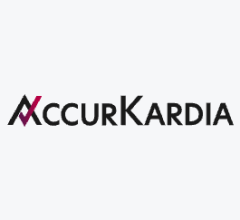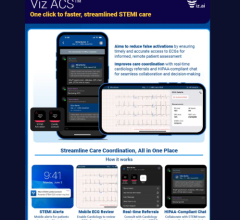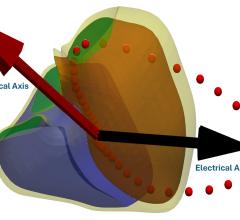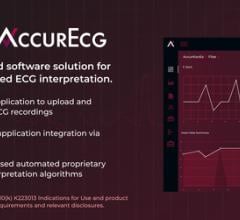
UPMC Mercy Hospital in Pittsburgh adopted the Lumedex Apollo PACS to unify all the cardiology departments components into one workstation. They found many integration issues are due to older equipment data formats.
As healthcare marches toward completely wireless electronic medical records, Diagnostic and Interventional Cardiology will periodically highlight how cardiac departments around the country are working toward this goal.
The terms “interoperability” and “connectivity” are buzzwords in healthcare, especially when vendors are promoting their products. However, most end-users will say out-of-the-box interoperability does not exist to connect all disparate devices and software. Below some readers share their experiences in finding a solution.
Vendor-Neutral, Web Solutions Help Connect Cardiology
In 2007, Floyd Medical Center in Rome, Ga., began its transformation from a totally paper-based cardiovascular department to a paperless electronic system. Today the cardiovascular department has merged all its imaging modalities except nuclear, planned for integration in 2011, using the FujiFilm Prosolv cardiovascular information system (CVIS). Anthony Gallagher, clinical coordinator for cardiology at Floyd Medical Center, said the system integrates with the radiology department’s FujiFilm picture archiving and communications system (PACS), which made for an easier transition because the systems were compatible.
He said merging all the imaging, ECG and cath lab devices into one system eliminated the need for multiple workstations and several software systems, each requiring a separate login. This allows staff to access all patient reports and images from any computer in the department.
ECG, Holter and routine stress testing is confirmed by the physician through the CardioServer Epiphany ECG management and reporting system. Gallagher said it took longer than expected to build an interface between ProSolv and Epiphany, but the two systems are being integrated this spring. Cardiologists will be able to call up ECGs and do reports in Prosolv without the need to open a new window and use a separate login to access the Epiphany system.
The ProSolv system also offers Web access, which Gallagher said is a big help. “Using Web integration, echo and cath procedure reports are now confirmed by the physicians from their respective offices for faster turn-around time,” he said. “Also, there is a Web viewer that allows cardiologists to view, but not confirm, studies from any computer with Internet access. This allows for a more rapid response in a stat situation.”
He said this feature is helpful when emergency cases need to be reviewed by a cardiologist at 3 a.m. They are able to call up images on their home computers.
The ECG management system works well, but the machines save the waveform data as XML files. Gallagher said the hospital recently added new Mortara ECG machines because they use a DICOM format for waveforms, making them easier to transfer in the CVIS system. The XML format machines take about a minute to transfer ECG data. The DICOM-compatible machines reduced this time to about 10 seconds. “DICOM also gave us the ability to work from worklists, which has made for a smoother workflow,” Gallagher said.
Integration Issues
“Any system has bumps in the road,” Gallagher explained. “When we went to the ProSolv system, we needed to upgrade a lot of our equipment so it was compatible. It was a big venture to go from a paper system to a paperless electronic system – it was expensive.”
It is not good enough for two software systems to use the same data interface standard, such as DICOM or HL7. For example, Gallagher said there were issues with integrating an older Witt hemodynamics system with ProSolv. The issue was solved by data mapping the information from the cath lab system so it was routed properly into ProSolv.
Older imaging systems can slow down CVIS workflow or cause integration issues. DICOM standards have changed in the past decade, and there are still many legacy systems that used proprietary data formats that may not be CVIS-compatible. Floyd has two cath labs, one with a new imaging system and one with a decade-old system. Gallagher said the old system takes three to five minutes to load an image into the CVIS, while the new system transfers images immediately.
“Years ago all the echo manufacturers used their own version of DICOM, so nothing was compatible,” Gallagher said. “Now DICOM compatibility really means something.” For this reason, Floyd is replacing its older echo machines with newer models with better DICOM compatibility.
The hospital also put systems into operation without first working out the bugs, which caused issues and staff frustration. There were issues integrating the CVIS with the hospital’s charge capture/billing system, which took some reprogramming to fix. At first, the CVIS also took a long time to load or transfer data because of insufficient data routers, which was fixed with upgrades to the wiring infrastructure.
To avoid integration issues, Gallagher suggests taking things at a slow pace, planning carefully and making sure all the needed components are in place and tested before going live.
“Our biggest problem has been jumping the gun on some things before we were ready,” he explained. “Slow down with your decisions and make sure you have someone involved from every department – anyone who will be using the system. That will stop finger-pointing along the way.”
Unifying Everything into One Workstation
UPMC Mercy Hospital, Pittsburgh, Pa. was challenged with finding one system to unify its noninvasive cardiac and vascular diagnostics, echocardiography, central cardiac telemetry, cardiac and peripheral cath labs, electrophysiology and cardiac surgery. “When we went to the marketplace, the winning company had to be able to connect all them all,” said Sally Mikesic, director, cardiovascular services, UPMC Mercy Hospital.
After searching the market, the staff decided on the Lumedex Apollo cardio PACS. The hospital used Lumedex software for 20 years, but periodically shops around when considering upgrades. The most recent upgrade in 2007 was designed to unify all the department’s components into one workstation.
While the system works well, she said there were some integration issues. Older equipment, such as an angiography system from 2001, was found to be incompatible because they used older DICOM standards. In most cases, Mikesic said the issues were solved by purchasing new equipment.
She said the system allows Web-based access so physicians can file reports from any computer with Internet access.
Tips When Purchasing
The goal of CVIS systems with smooth interoperability is to increase workflow. “What it does is help your staff work more efficiently,” Mikesic said. “They can do one more echo or one more vascular study per day.”
For any cardiac department evaluating new CVIS/PACS systems, Mikesic suggests they gather input from all the clinicians who will be using the system, including nurses and techs. This will ensure all modalities and subspecialties using these systems will get what they need. As an example, she said Mercy’s cath lab is also used by electrophysiologists, peripheral vascular interventionalists and vascular surgeons, so they required a CVIS that offered these reporting modules.
Once it is determined what features a CVIS needs, Mikesic suggests asking vendors for information on their products to narrow down which systems have what is needed. Then, put out a request for proposal (RFP) to the remaining prospective vendors.
“Drive the vendors to show you a hospital that lives and breathes with their system,” she said. Speaking with those hospitals will help determine if there are any issues with the software or potential integrations.
Finally, she urges patience and long-term planning. “You don’t change these systems overnight, it takes a long time,” Mikesic said.
Writing Your Own Connectivity Software
When interoperability solutions from the healthcare industry did not solve all its connectivity issues, Ochsner Health System in New Orleans developed a novel solution – write your own software.
Ochsner has a wide collection of best-of-breed medical technology from an array of manufacturers, but the facility could not find a single software solution to tie everything together. As a result, the cardiology department started programming its own patches to bridge the connectivity gaps and eventually created its own CVIS. Following the lead of Richard Milani, M.D., vice chairman of cardiology, Ochsner Health System, it used off-the-shelf programming software to help develop the system.
“A development environment that perhaps has one of the best implementations of object-oriented programming (OOP), Sybase’s PowerBuilder, has allowed a very limited team of developers to use the concept of inheritance, encapsulation and reusability to put it to use towards the development of CVIS,” said Andres Rubiano, systems director, cardiology and perioperative services, at Ochsner. “PowerBuilder’s extreme ease of use has contributed in large part to the team’s ability to focus on end-user design and business logic issues, to produce timely results.”
Through HL7, window socket and FTP technologies, Rubiano and his team designed their CVIS to integrate legacy data from other institution-wide systems, such as the hospital information system (HIS), purchasing, scheduling, billing and laboratory systems. Results generated in CVIS are then propagated instantaneously to the legacy systems.
One important breakthrough with Ochsner’s CVIS has been its ability to capture data from numerous medical devices. As cardiovascular technologists capture heart images using GE echo equipment, measurements are taken of various areas and these measurements are incorporated into the CVIS algorithm to help physicians make clinical findings. The system also incorporates images collected from Agfa’s Heartlab, as well as other scanned medical graphs in the EMR. Ochsner’s CVIS incorporates speech recognition technology, making the task of incorporating general remarks into the EMR very easy.
The CVIS now integrates all cardiovascular studies, including echocardiography, cardiac catheterization, electrophysiology, heart failure, stress echo, nuclear stress, documentation and tracking of the out-patient Coumadin clinic, billing, cardiac rehabilitation, clinical decision support software, quality control reporting, interaction with the institution’s patient medication database and laboratory system, and automated physician report cards.
Rubiano said the unified system has increased operational efficiency at Ochsner. It helped eliminate a three-week backlog for cardiovascular test results, enabling physicians and patients to get immediate results. It also improved the accuracy of patient records and streamlined claims paperwork by eliminating manual intervention. The system also helped reduce service claim denials by health insurance carriers by $300,000 to $400,000 per year by allowing performing physicians to correct ordering diagnosis. He said it also eliminated transcription costs, saving $40,000 to $60,000 per year.
Rubiano said the home-developed software package will be integrated into Ochsner’s new Epic EMR system. This includes connecting cardiovascular data to the EMR, scheduling, results and billing interfaces.




 January 15, 2026
January 15, 2026 









